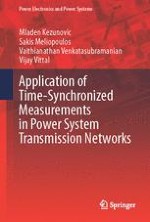This book illuminates how synchrophasors achieve the monitoring, protection and control optimizations necessary to expand existing power systems to support increasing amounts of renewable and distributed energy resources. The authors describe synchrophasor techniques that can provide operators with better resolution in capturing dynamic behavior of the power grid. The resulting insights support improved real-time decision making in the face of more generation and load uncertainty, as well as interruptions caused by random acts of nature and malicious attacks. Armed with the information in this cutting-edge resource, grid planners and operators can make optimized, flexible, resilient power systems a reality.
